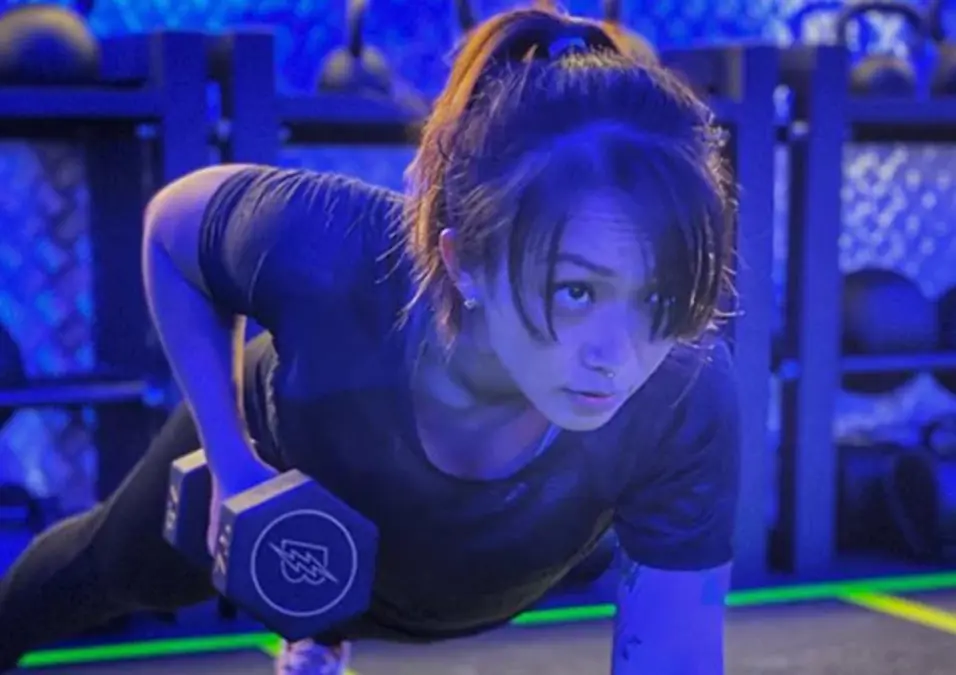5 myths about HIIT training

SIGN UP FOR YOUR FREE DAY PASS TODAY!
HIIT training is one of the most popular forms of exercises in modern gym circles. There is a good reason for this: it is fast-paced and quickly completed, can help to build muscle, and has great cardiovascular and weight loss potential. It is an intense and effective style of training.
However, as with anything that rapidly gains popularity with the general public, there are plenty of misconceptions surrounding HIIT workouts like CrossFit or a similar workout. These need to be laid to rest, so let’s take a look at five of the most common myths.
5 common myths about HIIT Training
1. HIIT training is better than steady-state cardio
It’s not always a good idea to talk in terms of ‘better’ or ‘worse’ in fitness. ‘Different’ is most often more relevant, with a different style of exercise giving you different results, different pros and different cons.
HIIT training and cardio exercise are no different. They serve different purposes and come with their own positives and negatives.
HIIT will have you training at a high percentage of your max heart rate (usually around 90%). Explosive rounds of high energy work are interspersed with periods of lower intensity. It usually results in hypertrophy and an ability to handle explosive power more readily. This has great carryover for explosive sports like weightlifting, boxing and track sprinting.
However, steady state cardio, in which you keep your heart rate around 60-70% for longer periods (20 minutes or more is a good aim), promotes greater work and adaptation in the heart and lungs, among other benefits. This is better for overall fitness and health, will improve blood flow, and can be performed more frequently as it is far less taxing.
Don’t replace one with the other: make room for both in your life.
2. It’s better to focus isolate body parts
This is less common, but you do see it. People decide to work legs as HIIT assistance after squats. They go with arms, legs and chest on upper body days. If you want to count this as intense assistance work, fine: that’s exactly what it is.
It’s not the most useful method for HIIT training, however. Workouts like the Crossfit WOD utilize isolation very well.
Getting your heart rate up to a HIIT specific target range means using a lot of oxygen and, therefore, blood. This generally means recruiting as much muscle fibre as possible. You can’t really achieve this just with pull ups and press up. You need every single body part moving under load at some point in a HIIT session, if possible. You at least need your legs, as they are your largest muscle group.
3. HIIT training is for everyone
HIIT is perfect for moderately fit people and above, who have no (or few) injuries, and who have no pertinent underlying health conditions. If you have any injuries, cardio issues, degenerative issues, or if you are simply new to fitness, HIIT will be too intense: at least begin with lighter cardio.
HIIT training is great for weight loss. However, you should be wary of doing it if you are obese. The extra strain that that much body fat puts on your joints makes the kind of explosive movements commonly seen in HIIT impractical and often dangerous. Use HIIT to bring your body fat percentage down from 25 to 20. Don’t do it if you’re much over 30%.
4. More is better
This is where steady state cardio should take over. If you can perform HIIT every single day without loss of performance, without DOMS (delayed onset of muscle soreness) holding you back, and without your joints needing time to recover, you’re probably not performing HIIT. It would be like lifting weights every day: you need time to recover if you’re training to a correct intensity.
Three to four sessions per week is good. It will give you time to recover so that you can always perform HIIT at a high intensity. If you want to train more, or maximise weight loss, try steady state cardio on your off days- go for a walk, swim or light jog.
5. HIIT training takes equipment
One of the best things about HIIT is that it takes little to no equipment. Though it may be nice to have upright cycles, kettlebells, barbells and boxes to keep things interesting, equipment is completely unnecessary.
The usual stable of bodyweight exercises is perfect for HIIT. Alternate push ups with squat jumps, burpees with mountain climbers. As long as you keep correct timings and intensities, you will elicit the results you want from HIIT.
Alternatively, HIIT is a kind of sprint training… so sprint. Flat or hill sprints, interspersed with gentle jogging or walking, make for great HIIT training.
GET YOUR FREE TRIAL TODAY














































































